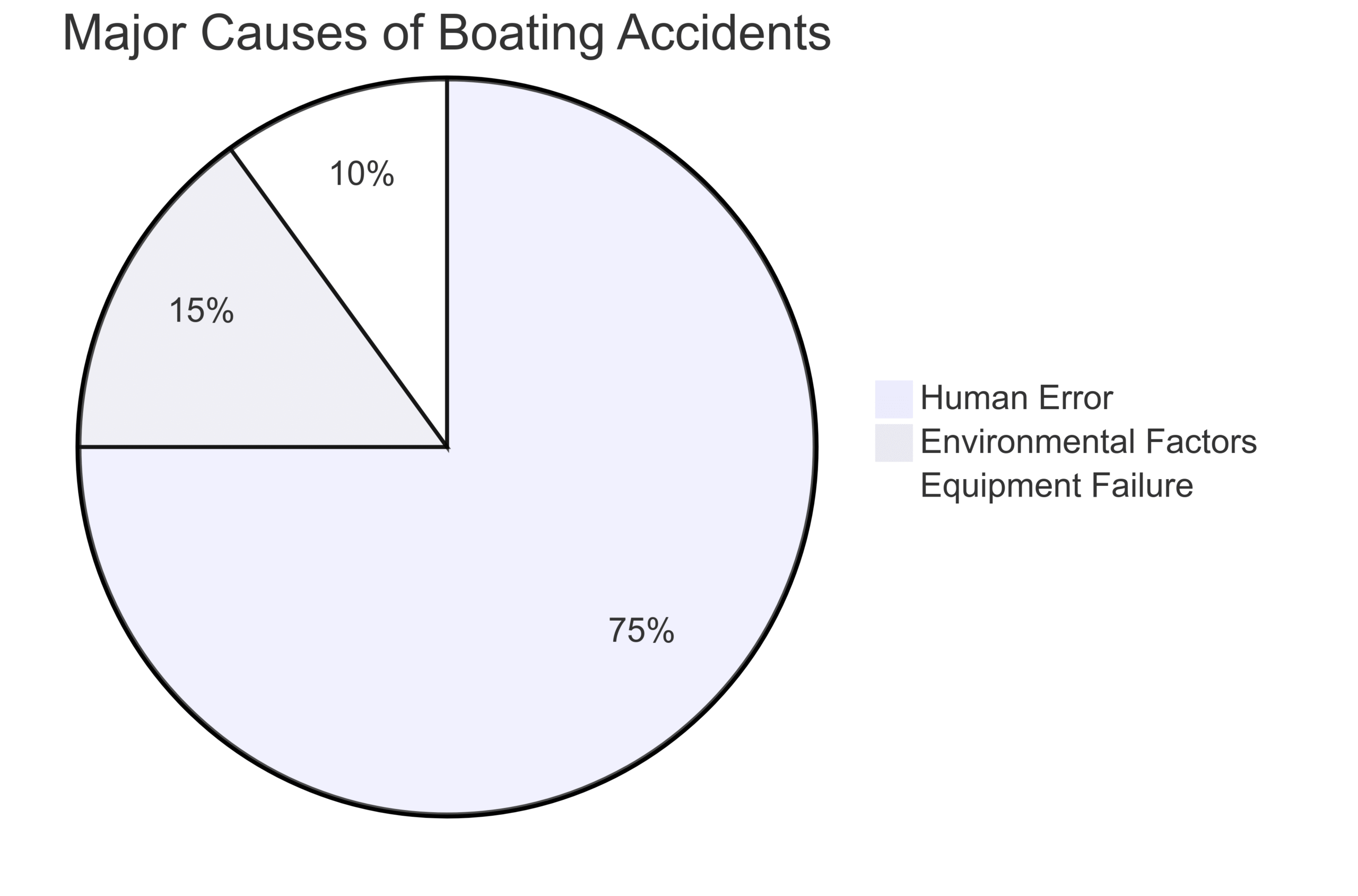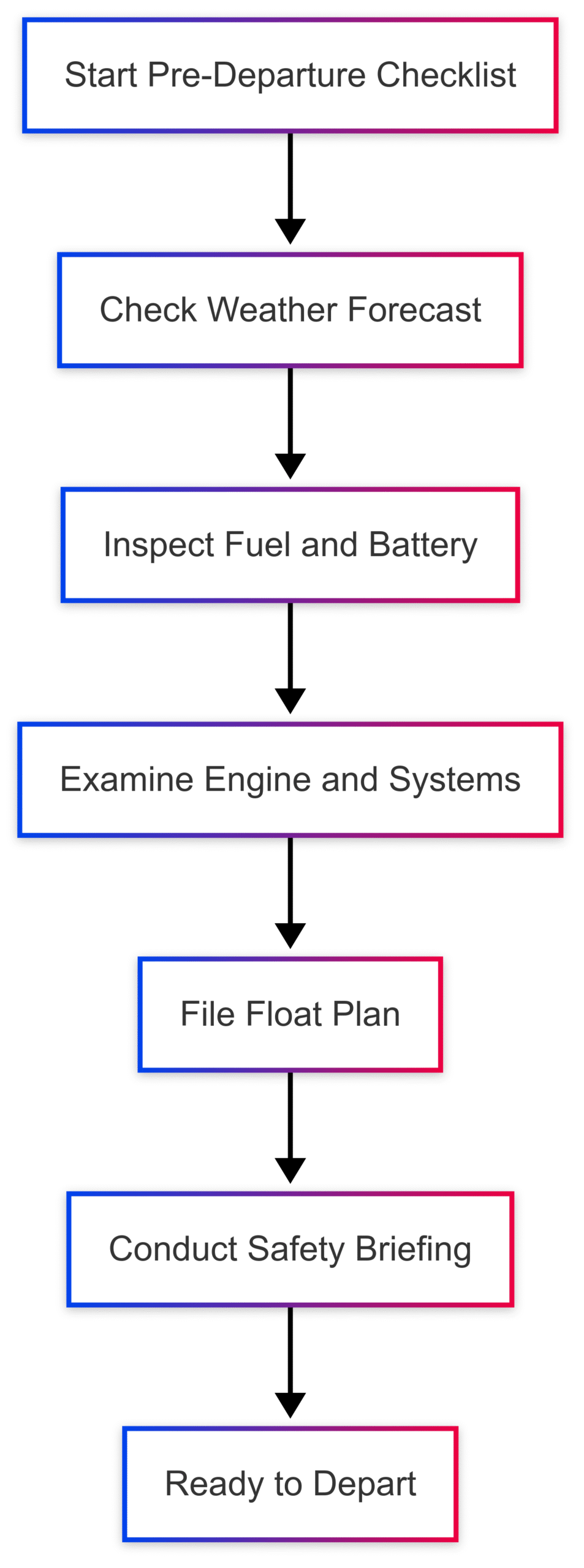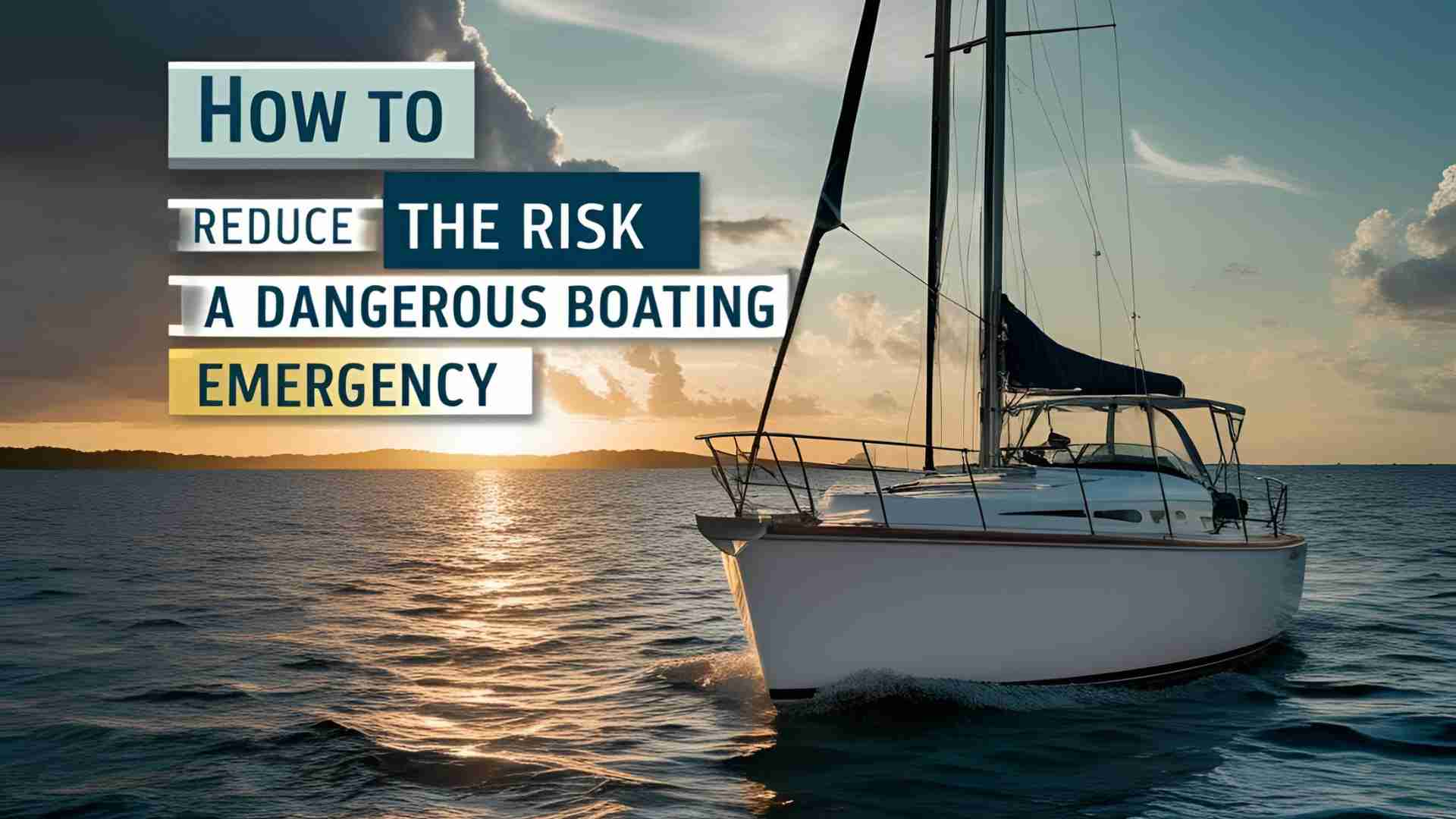How to Reduce the Risk of a Dangerous Boating Emergency
Learn how to reduce the risk of dangerous boating emergencies with essential safety tips, equipment, and practices for a secure and enjoyable time on the water.
Boating is a cherished activity that offers adventure, relaxation, and a unique connection to nature. Whether you’re cruising on a serene lake or navigating the open ocean, the freedom of the water is unmatched. However, this freedom comes with inherent risks. Boating emergencies, such as capsizing, collisions, or equipment failures, can escalate quickly, turning a pleasant outing into a life-threatening situation. According to the U.S. Coast Guard, there were 3,844 boating incidents in 2023, resulting in 564 deaths and over $63 million in property damage. In Canada, approximately 100 recreational boaters die annually, with 80% of fatalities linked to not wearing life jackets. These statistics underscore the importance of proactive safety measures to prevent emergencies and ensure everyone returns safely to shore.
This comprehensive guide explores practical strategies to reduce the risk of dangerous boating emergencies. From choosing the right vessel to preparing for unexpected situations, we’ll cover essential safety practices, required equipment, and emergency response techniques to keep you and your passengers safe. By adopting these measures, you can minimize risks and enjoy your time on the water with confidence.
Understanding Boating Risks
Boating emergencies can arise from various factors, including human error, environmental conditions, and equipment failure. The U.S. Coast Guard identifies operator inattention, improper lookout, inexperience, excessive speed, and machinery failure as leading causes of accidents. Human error accounts for approximately 75% of incidents, environmental factors 15%, and equipment issues 10%. Recognizing these risks is the first step toward prevention.

Capsizing, where a boat overturns, is one of the most serious emergencies, often caused by rough waters, overloading, or sudden waves. Collisions with other vessels or objects can result in injuries or fatalities, while mechanical failures, such as engine breakdowns, can leave boaters stranded. Environmental hazards, like sudden storms or fog, further increase risks. By understanding these dangers, boaters can take proactive steps to mitigate them.
Choosing the Right Boat
Selecting a vessel suited to your needs and boating environment is critical for safety. Boats vary in size, design, and capabilities, and the right choice depends on your lifestyle and intended use. For example, a small fishing boat is ideal for calm inland waters, requiring less power and storage than a vessel designed for open ocean conditions. Consider the following factors when choosing a boat:
- Purpose: Are you fishing, cruising, or engaging in water sports? Ensure the boat’s design supports your activities.
- Location: Inland lakes demand different features than coastal waters. Assess water conditions, such as currents and tides.
- Capacity: Check the boat’s passenger and weight limits to avoid overloading, which can compromise stability.
- Maneuverability: Smaller boats are easier to dock and handle, ideal for beginners or those with limited storage.
For example, a 16-foot aluminum fishing boat (e.g., Lund 1600 Fury, priced around $15,000-$20,000) is suitable for calm lakes, while a 25-foot center console boat (e.g., Boston Whaler 250 Outrage, priced around $100,000-$150,000) is better for offshore adventures. Choosing the right boat reduces the likelihood of emergencies due to mismatched capabilities.
Essential Safety Equipment
Equipping your vessel with the right safety gear is non-negotiable. The U.S. Coast Guard mandates specific equipment based on vessel size and passenger count. Below is a detailed list of essential items and their specifications:
| Equipment | Description | Specifications |
|---|---|---|
| Life Jackets (PFDs) | USCG-approved Type I, II, III, or V PFDs for each person; Type IV for vessels 16+ feet. | Proper size (based on weight/chest size), good condition, USCG approval number. |
| Fire Extinguisher | Fully charged, accessible extinguisher for fire emergencies. | Type B-C, suitable for fuel and electrical fires; e.g., Kidde 5-B:C ($15-$25). |
| Distress Signals | Flares, whistles, or horns for signaling help. | 3 day/night flares (e.g., Orion 12-Gauge Aerial Flares, $30-$50); waterproof storage. |
| VHF Radio | For communication with Coast Guard or other vessels. | Fixed-mount (e.g., Standard Horizon GX1400, $150-$200) or handheld ($100-$150). |
| Navigation Lights | Required for visibility at night or in low-visibility conditions. | Red/green bow lights, white stern light; compliant with USCG standards. |
| First Aid Kit | For treating minor injuries or stabilizing serious ones. | Waterproof, includes bandages, antiseptics, etc. (e.g., Adventure Medical Kits, $25-$50). |
| Throwable Flotation | Cushion or ring for rescue situations. | USCG-approved Type IV (e.g., Stearns Throwable Cushion, $20-$30). |
Boater’s Tip: Ensure all equipment is regularly inspected and maintained. Replace expired flares and check fire extinguishers annually. Life jackets should be worn at all times, as emergencies leave little time to put them on. The U.S. Coast Guard reports that 83% of drowning victims in 2021 were not wearing life jackets, emphasizing their critical role.
Pre-Departure Checklist
A thorough pre-departure checklist minimizes risks before you leave the dock. Follow these steps:
- Weather Check: Monitor forecasts using apps like NOAA Weather or AccuWeather. Avoid boating in storms, high winds, or fog.
- Fuel and Battery: Ensure sufficient fuel (with a 10% reserve) and a fully charged battery.
- Engine and Systems: Inspect the engine, bilge pump, and electrical systems for wear or leaks. Address issues immediately.
- Float Plan: Share your itinerary, including departure/return times and route, with a trusted contact. Include vessel details and passenger list.
- Safety Briefing: Show passengers where safety equipment is stored and how to use it, including life jackets, VHF radio, and fire extinguishers.

Safe Boating Practices
Once on the water, adhere to these practices to reduce risks:
- Wear Life Jackets: Ensure everyone wears a properly fitted, USCG-approved life jacket. Children under 6 must wear one on vessels under 26 feet in Florida waters.
- Stay Sober: Boating under the influence is illegal and increases accident risk. Alcohol is a factor in nearly 50% of fatal boating accidents in Canada.
- Follow Navigation Rules: Learn and apply the “Rules of the Road” to avoid collisions. For example, yield to vessels on your starboard side.
- Maintain Safe Speed: Operate at speeds appropriate for conditions, especially in crowded or shallow areas.
- Stay Vigilant: Monitor for other boats, swimmers, and obstacles. Use a spotter for water sports like skiing or tubing.
- Avoid Overloading: Respect weight and passenger limits to prevent capsizing.
Emergency Preparedness
Despite precautions, emergencies can occur. Being prepared ensures a swift and effective response. Key steps include:
- Carry Communication Devices: A VHF radio (Channel 16 for emergencies) is ideal for contacting the Coast Guard. Cell phones are less reliable in remote areas but should be water-resistant and fully charged.
- Practice Emergency Drills: Conduct drills for capsizing, fire, and crew-overboard (COB) scenarios. For COB, practice techniques like the “quick-stop” or “figure-eight” rescue.
- Know Emergency Procedures: In a capsizing, perform a head count, stay with the boat, and signal for help using flares or a whistle. For a fire, use the extinguisher and evacuate if necessary. For COB, stop the boat, assign a lookout, and deploy flotation devices.
- File a Float Plan: This aids rescuers if you don’t return as planned. Include GPS coordinates or landmarks for your location.
Handling a Capsizing
If your boat capsizes:
- Stay calm and conduct a head count.
- Ensure everyone is wearing a PFD and stays with the boat unless it’s drifting toward a hazard.
- For small sailboats, stand on the centerboard to right the vessel, attaching a flotation device to the mast if possible.
- Signal for help using flares, whistles, or by waving light-colored clothing.
Crew Overboard (COB) Response
For a COB incident:
- Stop the boat immediately to reduce distance from the person.
- Assign a lookout to keep the person in sight.
- Throw a flotation device (e.g., life ring) to the person.
- Maneuver the boat downwind of the person for easier rescue, avoiding the propeller.
- Use a ladder, swim platform, or Lifesling to bring the person aboard.
Vessel Security Check
A vessel security check (VSC) ensures your boat is safe and secure. Conduct the following:
- Secure Entry Points: Check that doors, hatches, and windows are locked to prevent unauthorized access.
- Protect Equipment: Store valuable items in lockable containers and label hazardous materials.
- Know Reporting Procedures: Familiarize yourself with local emergency contacts and reporting requirements for suspicious activity.
Free VSCs are available through the U.S. Coast Guard Auxiliary or U.S. Power Squadron.
Maintenance and Inspections
Regular maintenance prevents mechanical failures that could lead to emergencies. Key tasks include:
- Engine Checks: Inspect oil levels, belts, and hoses regularly. Schedule professional servicing annually.
- Hull Maintenance: Clean the hull to prevent barnacle buildup, which can affect stability.
- Electrical Systems: Check wiring and batteries for corrosion or damage.
- Pre-Departure Inspection: Before each trip, verify that navigation lights, bilge pumps, and safety equipment are functional.
Boating Safety Courses
Education is a cornerstone of safety. Boating safety courses, offered by organizations like BOATERexam or the U.S. Coast Guard Auxiliary, cover navigation, emergency procedures, and local regulations. In 2023, 75% of U.S. boating deaths involved operators without safety education, highlighting the value of training. Courses are available online or in-person, costing $20-$50, and can be completed in a few hours.
National Boating Safety Week
National Boating Safety Week (May 17-23, 2025) promotes awareness through campaigns like the “Wear It” program, encouraging life jacket use. Participating in events or taking a safety course during this week reinforces safe habits for the season.
Legal Responsibilities
In case of an accident, boaters must:
- Report Incidents: File a Boating Accident Report (BAR) for accidents involving death, serious injury, or property damage over $2,000 (or $500 in some states). Fatal accidents require immediate notification.
- Render Assistance: Assist others in distress if it’s safe to do so, as required by law.
- Follow Local Regulations: Check state-specific rules, as requirements vary.
Technology and Backup Plans
Modern technology, like GPS and depth finders, enhances safety but can fail. Carry paper charts and a compass as backups. Apps like BOATERexam’s safety app ($5-$10) provide real-time navigation and safety tips.
Safety for Water Sports
Water skiing, tubing, and wakeboarding require additional precautions:
- Use a spotter to monitor the participant.
- Learn hand signals for communication.
- Ensure the towline is clear of the propeller.
- Operate only during daylight hours.
Conclusion
Reducing the risk of a dangerous boating emergency requires preparation, vigilance, and adherence to safety practices. By choosing the right boat, equipping it with essential gear, conducting pre-departure checks, and following safe boating practices, you can significantly lower the likelihood of accidents. Education through safety courses and regular maintenance further enhances your preparedness. Should an emergency occur, knowing how to respond—whether it’s a capsizing, COB, or fire—can save lives. Boating is about enjoying the water, but safety must always come first. By implementing these strategies, you’ll ensure your adventures are both thrilling and secure, allowing you to create lasting memories on the water.
Happy Boating!
Share How to Reduce the Risk of a Dangerous Boating Emergency with your friends and leave a comment below with your thoughts.
Read The Ultimate Guide to Boat Trailer Tire Pressure until we meet in the next article.






